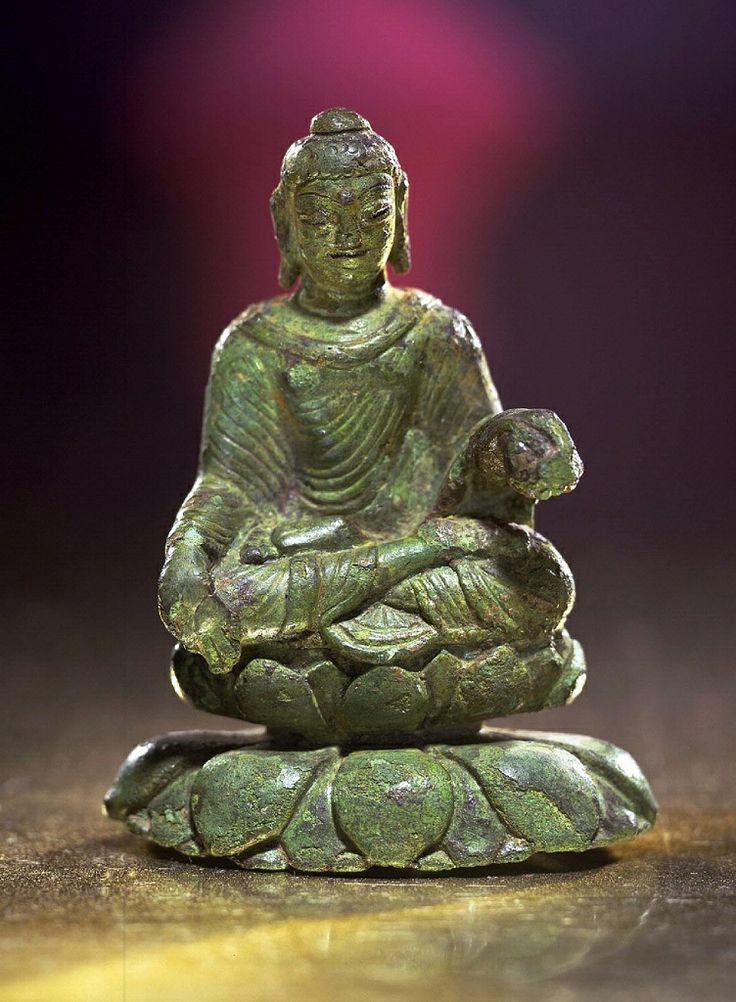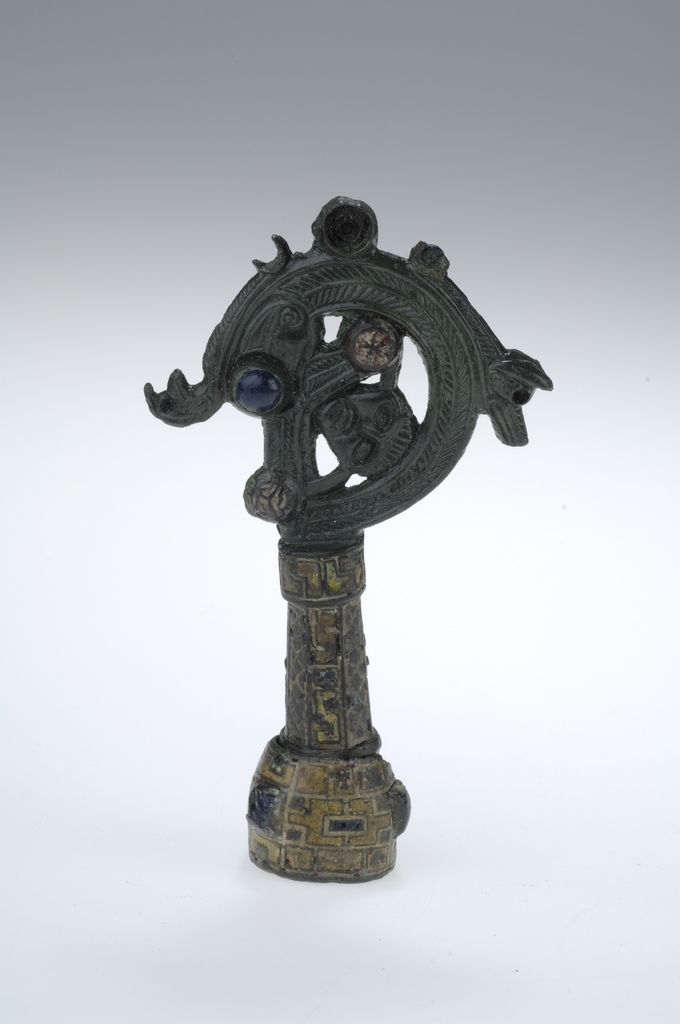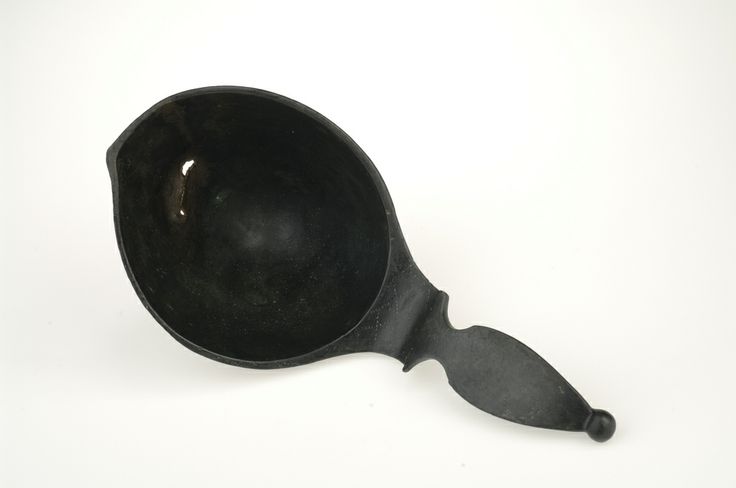Aremarkable collection of religious items sourced from diverse lands was discovered during archaeological excavations on the Swedish island of Helgo. Located in Lake Malaren, to the west of Stockholm, this small island was an important Viking trading and manufacturing centre (6th-11th centuries AD). It has produced an enormous collection of artefacts, including numerous exotic finds such as Arabic coins, Frankish glass and metal-work from across western Europe.
However, the most famous objects found were three precious items, now known as the Helgo treasure. Discovered close together, these artefacts included a Buddha from the Indian sub-continent, an elaborate crozier-head from Ireland and a bronze ladle from North-Africa.
The Buddha statue from India
Helgo Buddha (© Swedish History Museum)
Undoubtedly the most extraordinary find discovered during the excavations at Helgo was a small, bronze Buddha. This devotional figure dates from circa the 6th century AD and was probably made in Kashmir, on the Pakistan/India border. The Buddha has a silver urna on his forehead, symbolizing the third eye, while the ears have long lobes, the insignia of royalty. He sits in a meditative pose upon a double lotus throne, the latter representing purity. The Buddha probably arrived in Helgo via Swedish merchants whose eastern trade routes were concentrated along Russian rivers such as the Volga.
The Bishop’s Crozier from Ireland
The crozier © Swedish History Museum
The Helgo crozier is probably of Irish origin and would have formed part of a bishop’s staff. Dating from circa the 8th century AD, it was most likely stolen during a Viking raid on Ireland and brought back to Helgo as booty. The crozier is fashioned out of bronze and is decorated with enamel and coloured glass inlays. Its curving terminal appears to depict the biblical tale of Jonah trapped in the mouth of a whale or sea-monster. A similar decorative motif is also employed on a broadly contemporary crozier from Aghadoe in Co. Kerry.
The Coptic Ladle from Eqypt
Coptic ladle Helgo (© Swedish History Museum)
The third object from the Helgo treasure is a bronze ladle whose origins lie in North Africa, probably in the vicinity of modern-day Egypt. Decorated in small punch-marks, which define a Tree-of-Life symbol, the ladle was most likely used in ceremonies associated with the early Coptic church. It may have arrived in Sweden via Scandinavians who had visited the Mediterranean. Indeed, it appears the Vikings were quite active in this region and there are a number of accounts of Norse attacks on the Iberian peninsula and north Africa. In addition, many men from Sweden and the surrounding lands joined the Varangian Guard, an elite unit of the Byzantine army, which was active from the 9th to 14th centuries.
References
Androshchuck, F. 2007 ‘Rural Vikings and Viking Helgo’, in Franson U. et al (eds.) Cultural interactions between east and west. Archaeology, artefacts and human contacts in northern Europe. Stockholm studies in Archaeology 44. Stockholm, pp. 153-163
Lundstrom, A. 1978 ‘Helgo: A pre-Viking trading centre’ in Archaeology, Vol. 31, No. 4, pp. 24-31



1 comment:
I went to Helgo recently to see the place where the statue was found. We also went to history museum to see the buddha statue there. Here is the movie about it: https://www.youtube.com/watch?v=-AmEzg9KfWA&t=50s
Post a Comment